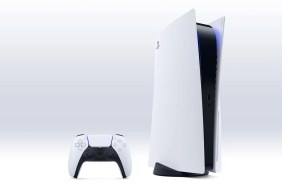One of the PS5’s biggest new features is the Activity Cards, which allows players to see some options and suggestions for what to jump into next in any given game. It’s a system-level interface that engages deeply with the game (at least when utilized by the developer), and in a title like Spider-Man Miles Morales, it can almost instantly transport people right to the start of a side mission without needing to scour the map and find it. Sure, you can still play the old fashioned way, swinging around looking for icons on the map yourself, but Activity Cards were designed to remove some of the friction players can often run into when playing single-player games.
VICE’s Patrick Klepek was so fascinated by the feature (and the discourse that surrounded it), he wanted to find out more about where it came from and what Sony’s logic was behind developing Activity Cards as a central part of the PS5 UI. VICE Games got their hands on confidential internal documents that were circulated to developers in 2019, which detailed both the Activity Cards and Game Help functions.
Sony used the presentation to explain that single-player gaming wasn’t “dying,” it just had a few points of friction that players often ran into that impacted the experience. Most notably, it outlined the scenarios that players may have that would prevent them for engaging with a single-player game:
- “No idea how long I might need, don’t play unless I have 2+ free hours”
- “Takes a lot of time to scan through long help videos when stuck”
- “How to engage socially without risk of spoilers”
- “Forgot what I was doing in this game last time, hard to get back in”
“Often, free time comes wedged between other obligations. An hour before bed. A 30-minute break between homework assignments. A few minutes before your online [multiplayer] match,” one slide in the presentation says. Sony is pointing out that players end up with decision fatigue. It often take a long time to get back into a single-player game, to remember where you are, what you were doing, and figure out what you want to do next. In addition, you sometimes just don’t know how long that mission is actually going to take.
PS5 Activity Cards are designed to remove some of these barriers to play at the system level. The PS5 itself wants to get you right into the game at exactly the spot you want to be, and give you a rough idea of how much time you may spend with it. The internal documents (again, from 2019, so things may have changed) refers to this as the “Universal Data System,” in which the PS5 interfaces with the game to give you a lot of information up front and let players more meaningfully plan and engage with games in their free time.
Of course, it’s entirely up to the developer in how to implement these gameplay “bookmarks.” Even Sony’s own launch titles use the PS5 Activity cards differently. Klepek points out that Miles Morales uses them for missions, while Demon’s Souls allows players to teleport between worlds with ease. And the PS5’s lightning fast load times remove even more of the friction.
PS5 Activity Cards have an ancillary benefit for multiplayer games too, despite initially being designed to solve a decidedly single-player problem. For a game like Call of Duty: Black Ops Cold War, you can jump right from the PS5 dashboard into matchmaking without needing to navigate any menus at all. Activity Cards allow developers to effectively “bookmark” specific points within their games, whether it’s a place in the world, a mission, or a multiplayer playlist. And this is just the beginning. The feature is sure to find creative uses and further evolutions throughout the life of the PS5, but its initial design was simply to remove decision fatigue and the friction that arises between a player and their games.








